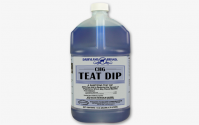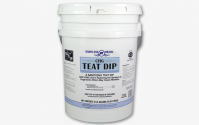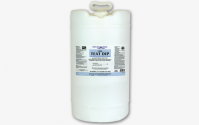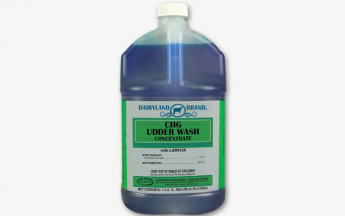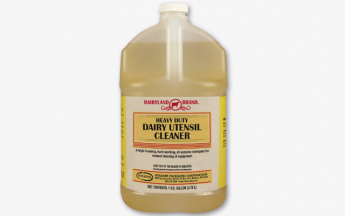You have 0 items in your cart.

CHG Teat Dip
Category:
Farm Sanitation
Add to wishlist
A sanitizing chlorhexidine based teat dip
- Unique dual action formula with chlorhexidine gluconate and quaternary ammonium
- An aid in reducing the spread of organisms which may cause mastitis
- Mild to the teat and skin
- Deep blue color makes it easy to see which teats have been dipped
- For lactating dairy cows and dairy goats
- FDA regulated, NDC #060282-2080
| Product Number | 1205342, 1206783, 1206691 |
| Old Product # | ST-80, ST-285, ST-280, ST-281 |
|
|
Teat Dips |
CHG Teat Dip has a unique dual action formula that contains 0.35% chlorhexidine gluconate and 0.20% quaternary ammonium. Mild to the teat and skin. Its deep blue color shows you which teats have been dipped. A sanitizing teat dip — an aid in reducing the spread of organisms which may cause mastitis.
FDA regulated product's NDC# 060282-1080 and 060282-2080
#1205342 - 4x1 gallon case
#1206783 - 5 gallon pail
#1206691 - 15 gallon drum
Teat dipping is an important part of a mastitis control plan:
- Dip teats immediately after milking.
- Use good milking and environmental management procedures.
- Use properly functioning milking equipment.
- Treat every quarter of every cow at dry off.
- Identify and treat or manage clinical cases promptly.
- Cull chronically infected cows.
Teat dipping in cold weather:
When the temperature falls below 10°F, or when wind chill is significant, special precautions should be taken to avoid chapped and frozen teats.
- Teats should be dry before turning cows out into cold weather.
- When teats are dipped after milking, allow 30 seconds contact, and blot off any excess teat dip with a single service towel.
- Warm the teat dip to reduce drying time.
- Provide windbreaks in outside areas for cows.
- Monitor fresh cows with swollen udders and teats since they are more susceptible to chapped and frozen teats.
Directions
- DO NOT DILUTE.
- Dip teats immediately after milking as a routine part of milking procedures.
- Dip to THOROUGHLY COVER at least the lower one-third of the teat (preferably to the base of the udder), IMMEDIATELY after every milking.
- Empty and clean dip cups after each milking, or during milking, if they become contaminated.
- Do not pour used dip back into original container.
- KEEP FROM FREEZING.
- Keep container closed to prevent contamination.
- Store container in an upright position.
Attachments
-
Technical Data Sheet
pdf | 1.93 MB | 1084 hits -
SDS
pdf | 227.63 KB | 1416 hits









